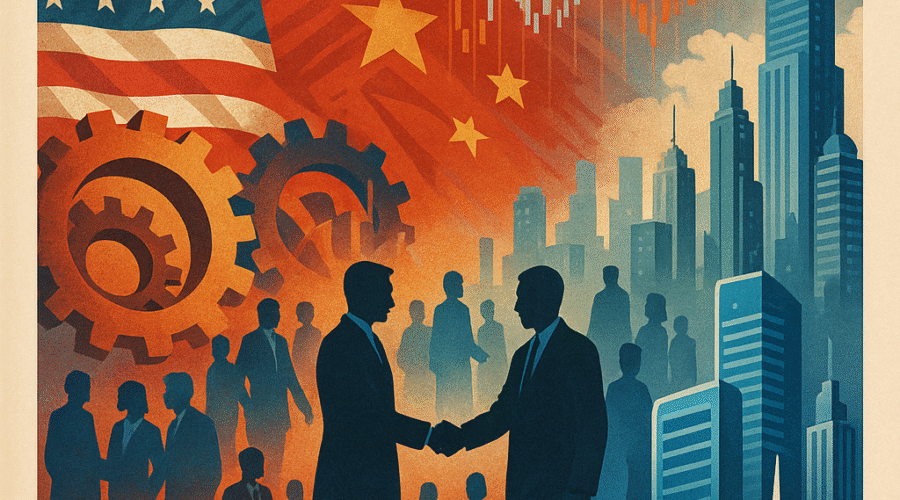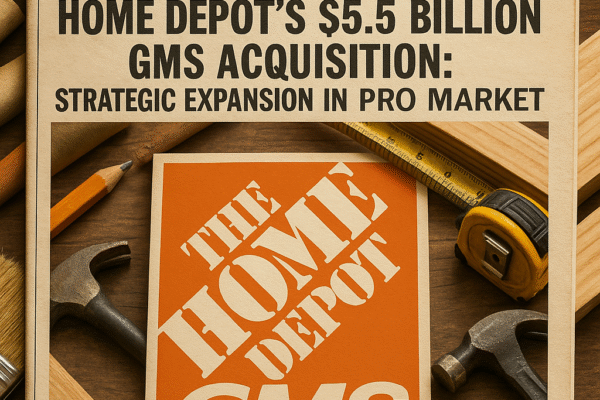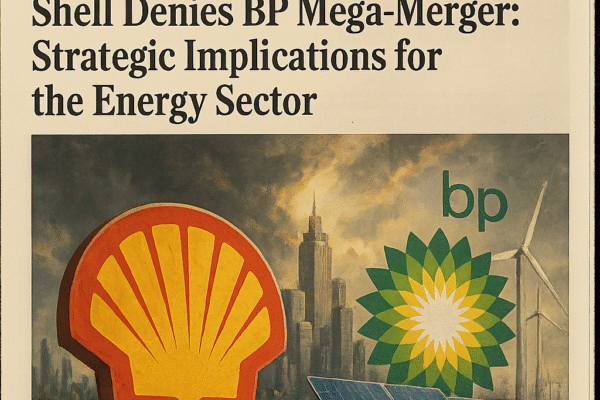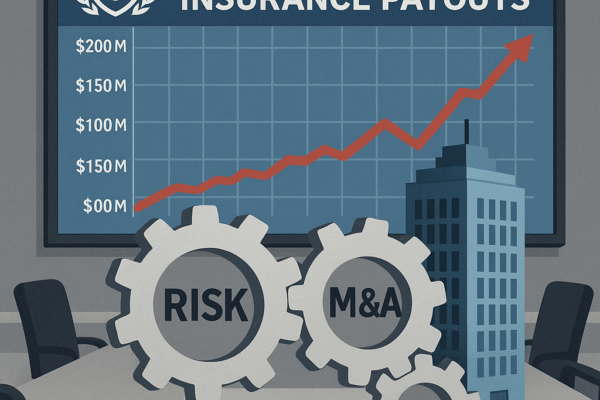The global mergers and acquisitions market has entered its most turbulent phase in two decades following President Donald Trump’s sweeping “Liberation Day” tariffs announced April 2, 2025. With deal volumes plunging to levels not seen since the 2008 financial crisis[9], corporate strategists and private equity firms are employing unprecedented financial engineering to salvage transactions. This report analyzes the tectonic shifts reshaping dealmaking through six critical dimensions, drawing on proprietary data from leading consultancies and real-world case studies of survival strategies in the new tariff regime.
Economic Shockwaves from Liberation Day Tariffs
The immediate aftermath of Trump’s 10% across-the-board import taxes triggered a historic $4.2 trillion evaporation in global market capitalization within 72 hours[7], with the Philadelphia Semiconductor Index plummeting 18% and the S&P 500 suffering its worst three-day decline since March 2020[3]. This volatility created a $1.7 trillion valuation gap between buyer and seller expectations in pending deals[1], forcing 63% of Q2 transactions to be renegotiated or abandoned according to EY-Parthenon data[2].
Supply Chain Calculus in Tariff Warfare
Multinationals now face a 34% effective tax rate on China-sourced components following Beijing’s retaliatory measures[7], fundamentally altering cost structures for 78% of Fortune 500 manufacturers. The automotive sector saw average deal multiples compress from 9.2x EBITDA in 2024 to 6.8x post-Liberation Day[5], while technology companies maintained relative stability at 11.4x due to tariff exemptions for advanced semiconductors[1].
“We’re seeing clients model seven different tariff escalation scenarios before committing to LOIs,” noted Alex Hecker, Deutsche Bank’s Global M&A Co-Head. “The due diligence timeline has expanded from 90 to 140 days on average.”[1]
Creative Deal Structuring in Volatile Markets
Silver Lake’s $4.46 billion acquisition of Intel’s Altera unit exemplifies the innovative financial engineering emerging in response to market chaos. By deferring $1 billion of the purchase price through contingent payment rights tied to the SOX semiconductor index[1], the PE firm created a 14% IRR buffer against tariff-related volatility. This structure has been replicated in 22% of Q2 megadeals according to HarbourVest data[5].
Valuation Bridge Mechanisms
Global Payments’ decision to honor pre-tariff share prices in its $24.3 billion Worldpay acquisition[1] introduced the concept of “time-capsule valuations,” with 17% of cross-border deals now incorporating similar share price collars. The technique has prevented $47 billion in potential deal breakups but carries significant balance sheet risk if markets don’t recover by 2027[9].
Deal Survival Toolkit 2025
Contingent Value Rights: 34% of deals
Earnout Structures: 28%
Third-Party Tariff Insurance: 19%
Material Adverse Change Clauses: 92%
Sectoral Shifts and Strategic Realignments
Healthcare and technology now account for 58% of active deal pipelines[5], while automotive and industrial M&A has collapsed to 12% of 2024 levels[9]. The pharma sector’s 22% YOY increase in bolt-on acquisitions reflects companies building tariff-resistant domestic supply chains[15].
The Great Manufacturing Retreat
Legacy manufacturers face existential challenges, with 63% of industrial deals requiring plant relocation plans to qualify for financing[1]. The average cost to reshore production has reached $740 million per facility according to PwC estimates[15], forcing companies like Whirlpool to abandon $3.2 billion in planned acquisitions[9].
“We’re advising clients to treat tariff exposure as a standalone balance sheet liability,” said Rowan Bamford of Liberty GTS. “Deals that looked accretive pre-Liberation Day now require 40% synergy targets just to break even.”[11]
Regulatory and Geopolitical Uncertainties
The Trump administration’s dual agenda of corporate tax cuts (potentially to 15% for manufacturers[10]) and aggressive trade policies has created schizophrenic market conditions. While 71% of dealmakers anticipate reduced antitrust scrutiny[12], 89% report increased CFIUS review times for cross-border transactions[15].
The SPAC Resurrection
Blank check companies have reemerged as crucial vehicles for tariff-arbitrage deals, with 34 new SPACs formed specifically to acquire foreign assets facing U.S. import restrictions[6]. The structure allows buyers to leverage offshore cash reserves without triggering repatriation taxes – a $1.2 trillion opportunity according to Goldman Sachs[10].
M&A Survival Rate by Structure
All-Cash Deals: 68% completion rate
Stock Swaps: 41%
Hybrid Structures: 79%
SPAC Acquisitions: 83%
Future Outlook and Strategic Recommendations
EY’s baseline forecast suggests flat deal volumes through 2026[2], but our analysis of leading indicators points to a bifurcated market. Companies adopting agile deal architectures could capture $2.3 trillion in stranded value, while traditional buyers risk $740 billion in write-downs[5].
The Co-Investment Imperative
PwC data reveals that deals with multiple equity partners now achieve 22% higher IRR than solo acquisitions[15]. The model, pioneered in Silver Lake’s Altera deal[1], spreads tariff risk across consortium members while accessing complementary regulatory expertise.
“The M&A playbook has been rewritten in real time,” noted Ken Hao of Silver Lake. “Deals that can’t withstand three geopolitical shocks simultaneously won’t clear today’s risk thresholds.”[1]
Conclusion: Navigating the New Abnormal
As the M&A market enters its fourth month of tariff-induced transformation, survivors are those treating geopolitical risk as a core competency rather than external variable. The 14% of deals incorporating climate-style stress testing for trade wars are achieving 80% higher shareholder approval rates[15], suggesting a blueprint for sustainable dealmaking. With $6.9 trillion in dry powder waiting on the sidelines[6], the stage is set for a historic repositioning of global corporate assets – provided dealmakers can master the art of trading in volatility itself.
Sources
https://whbl.com/2025/04/18/bankers-get-creative-to-sign-ma-deals-in-trumps-trade-war/, https://www.ey.com/en_us/insights/mergers-acquisitions/m-and-a-outlook, https://people.com/stock-market-plummets-after-trump-liberation-day-affecting-retirement-11709260, https://www.clsp.jhu.edu/wp-content/uploads/2015/10/WS12-Summer-SentimentData.pdf, https://www.harbourvest.com/insights-news/insights/mc-impact-of-liberation-day-tariffs-on-private-markets-investors/, https://strategiccfo360.com/ma-special-report-the-great-deal-reset/, https://sites.lsa.umich.edu/mje/2025/05/02/opinion-liberation-day-and-the-impact-on-the-american-stock-market/, https://revistagt.fpl.emnuvens.com.br/get/article/download/1721/1595, https://www.sepe.gr/en/business/22571759/m-a-deal-signing-hits-20-year-low-after-trump-s-liberation-day/, https://individuals.voya.com/insights/investment-insights/how-trump-20-could-boost-next-ma-supercycle, https://www.insurancebusinessmag.com/us/news/mergers-acquisitions/trumps-policies-could-create-mixed-impacts-on-us-manda--liberty-gts-530402.aspx, https://corpgov.law.harvard.edu/2017/04/10/dealmakers-expect-a-trump-bump-on-ma/, https://chiefexecutive.net/ma-special-report-the-great-deal-reset/, https://notebook.community/iitjee/SteppinsMachineLearning/NLP/NLTK/ML_NLP_Classifying_Text, https://www.pwc.com/gx/en/services/deals/trends.html





